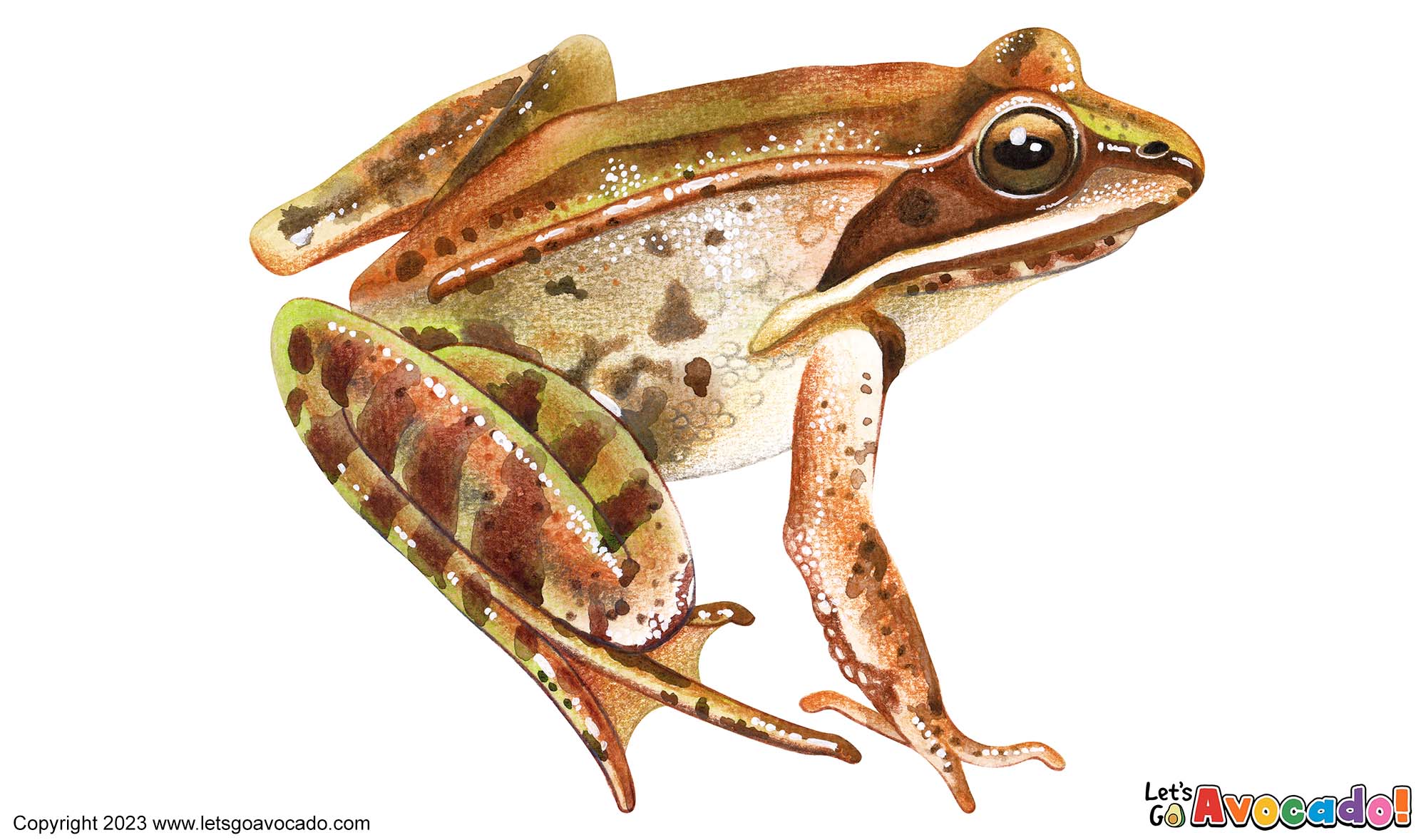Appearance: Wood frogs have a relatively compact body with a rounded snout and prominent eyes. They are typically small, measuring around 1.5 to 2.75 inches (3.8 to 7 centimeters) in length. Their skin coloration varies, but they commonly exhibit shades of brown, gray, or reddish-brown. They may also have darker patches or irregular markings on their body. A distinguishing feature of wood frogs is a dark-colored mask-like marking that extends from the eyes to the eardrums.
Range and Habitat: North American wood frogs are found across a broad geographical range. They inhabit various terrestrial and semi-aquatic habitats, including forests, woodlands, wetlands, bogs, and meadows. They are well adapted to withstand colder climates and can be found in northern regions where other frog species may not survive.
Breeding Behavior: Wood frogs exhibit an interesting breeding behavior. During the spring, as temperatures rise and snow melts, male wood frogs gather at breeding sites, such as ponds or vernal pools. They produce a distinct advertisement call, described as a duck-like quacking sound, to attract females. Mating occurs in the water, where females deposit eggs that are externally fertilized by males. After breeding, wood frogs leave the water and return to their terrestrial habitat.
Freezing Tolerance: One of the most remarkable aspects of the wood frog is its ability to survive freezing temperatures. As winter approaches, wood frogs undergo an incredible adaptationAn animal adaptation is a physical feature or a specific behavior that allows it to better survive in its environment. Learn More known as freeze tolerance. They can withstand the freezing of a significant portion of their body fluids and even their organs. They do this by producing high concentrations of glucose and other substances that act as cryoprotectants. These cryoprotectants prevent ice formation within the frog’s cells, protecting them from damage. When spring arrives, the wood frogs thaw out and resume their normal activities.
Diet: Wood frogs are opportunistic feeders, consuming a variety of invertebrates. Their diet primarily consists of small insects, spiders, worms, and other arthropods that they find in their terrestrial habitat. Tadpoles, during their aquatic stage, feed on algae and other organic matter present in the water.
Conservation Status: The North American wood frog is considered a species of least concern in terms of conservation. However, like many amphibians, they can be susceptible to habitat loss, pollution, and other environmental factors. Efforts are made to protect their natural habitats and ensure the continued survival of their populations.










